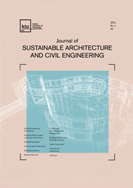Spatial Planning and Architectural Innovation in the Roman Town of Ocriculum
Spatial Planning and Architectural Innovation in the Roman Town of Ocriculum
Author(s): Giacomo AntonelliSubject(s): Architecture, Rural and urban sociology, Environmental interactions
Published by: Exeley Inc.
Keywords: architectural innovation; culvert; Ocriculum; Thermae; urban planning;
Summary/Abstract: The Roman settlement of Ocriculum (Otricoli, TR - Umbria), built on a tufa slope between the Tiber valley to the north and the San Vittore valley to the south, was established on massive substructures, which allowed the exploitation of a larger area. Albeit being relatively neglected by modern scholarship, these structures are none the less crucial to a thorough analysis of the urban planning of Ocriculum. Two buildings are mutually connected inside the city, even if they were not built at the same time: the bath complex, built in the mid-2nd century AD and restored until the 4th-5th cent. AD, and the underlying culvert, in which the San Vittore still flows, which was certainly built before the baths and most likely alongside the substructures. This artificial terrace, on which the baths lie and under which the channel runs, has been the first human alteration of the slope. The bath complex, although not entirely preserved, features several interesting architectural innovations. Modern technologies were employed alongside traditional methodologies to analyse the two buildings. This allowed not only a 3D reconstruction of these structures, but also a deep knowledge of the urban development and architectural history of Ocriculum. The culvert is part of the earliest attempts to shape the natural landscape for settlement purposes. On the overlying terrace there should have lain not only the bath complex, but also the theatre scene and its porticus post scaenam (both no longer visible). For this reason, the theatre is later than the culvert and not earlier (Hay-Keay-Millet, 2013). Consequently, the close “Great Substructures” belong to the same construction phase of the theatre, because they support the thrust of the upper terrace, on which was most likely found the political and religious centre of Ocriculum.
Journal: Journal of Sustainable Architecture and Civil Engineering
- Issue Year: 22/2018
- Issue No: 1
- Page Range: 11-26
- Page Count: 16
- Language: English

